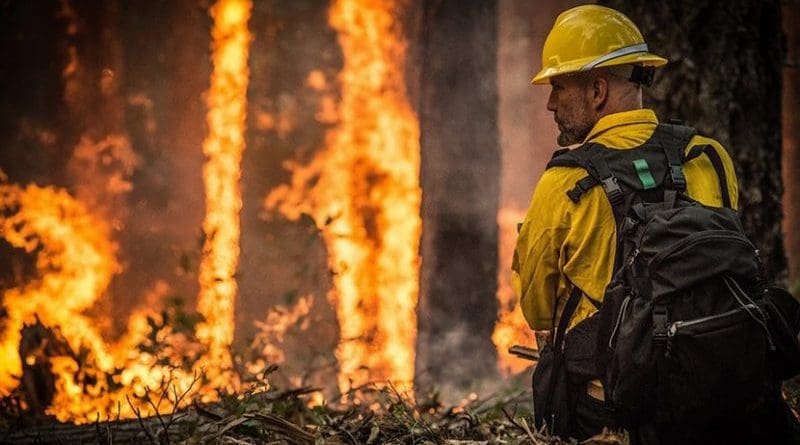Wildfire Risk To US Homes Is Rising, Especially In Western Grasslands And Shrublands
Drawing on 30 years of data, researchers show that the number of homes within wildfire perimeters in the U.S. has doubled since the 1990s. This increasing risk is driven by both an increase in wildfires and the expansion of new homes into wildfire-prone areas, especially in the wildland-urban interface.
Wildfire risks to homes are increasing, particularly in the wildland-urban interface (WUI), where houses and wildland vegetation are in close proximity. Over the last 12 years, more than 55,000 homes in the U.S. have been lost to wildfires due to rapid increases in both the total area of land burned and the number of houses in the WUI.
However, despite widespread concerns about wildfire risk, how wildfire extent and housing expansion in different types of vegetation and WUI contribute to increasing wildfire risk and home losses in the U.S. remain unknown.
Volker Radeloff and colleagues evaluated 30 years of data on wildfire occurrence and WUI growth in the U.S., from 1990 to 2020. The authors found that the number of houses within wildfire perimeters has more than doubled since the 1990s due to both housing expansion (47%) and an increase in wildfire occurrence (57%). Most houses exposed to wildfires were located in the WUI. The number of homes in the WUI has grown substantially since the 1990s, increasing by 46%, from 30 million to 44 million.
Moreover, the WUI at-large has also grown, increasing by 31% over the last three decades. Radeloff et al. note that even though their findings show that any growth in WUI also increases wildfire risk to houses, the continued growth of new construction in these areas suggests that wildfire occurrence is not discouraging development.
“This 30-year time series of wildfire-prone development based on a consistent methodology is valuable for research and policy design,” writes Jason Boomhower in a related Policy Forum. “Understanding how and where the WUI is growing or shrinking is crucial for designing and evaluating policies. It also allows researchers to unpack topics such as the effects of a broader housing market slowdown on WUI growth, as Radeloff et al. do.”

